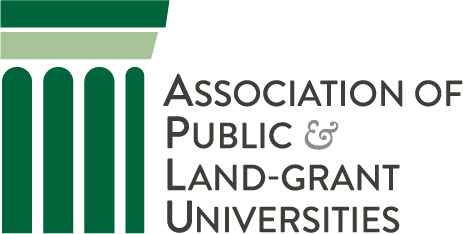A highlight of ADAPT 2021, a virtual digital learning showcase, was a panel featuring several students sharing their digital learning experience with college courses that used adaptive learning software.
Presented in December 2021 by Every Learner Everywhere, Achieving the Dream, and the Association of Public and Land-grant Universities (APLU), the daylong event showcased work in equity-centered digital learning in recent years, including instructional designers and faculty presenting the results of pilot projects.
Recordings of the presentations and forums are available on the ADAPT event website and on the Every Learner Everywhere YouTube channel.
As the event was programmed to be student focused, says Emilie Cook, Communications Manager for Every Learner Everywhere, organizers were eager to put together the panel Student Reflections On the Adaptive Learning Experience. “We wanted to showcase real-life examples of pilot programs implementing adaptive courseware, following the journey throughout, and part of that was hearing students share their perspective on how those pilots worked.”
Moderated by Mike Brokos, Project Manager at APLU, students from six institutions discussed their digital learning experiences with various adaptive courseware products and other digital learning tools.
Multiple learning modalities
Parts of the session were devoted to courseware features that were effective for students.
Jennine Wilson, who is studying health information management at Indian River State College in Florida, said the audible text feature in one product had an enormous impact on her work. “I am someone who needs to be read to,” Wilson said. “When I read to myself, I’m going to sleep within the first page.”
With the audible text feature, she added, “I’m able to do other things. I can prepare a meal. I can clean my house while it’s reading to me and it allows me to retain that information a lot better.”
Wilson also liked when digital courseware gives students a second chance on incorrect answers to problems, though she does suggest a tweak. “I’d like to have seen what my grade would have been without fixing the problem,” she said. “You’re like, ‘Yeah, I know this answer,’ but then you pick it and come up with a big goose egg. I want to know what that grade is with that goose egg, because that’s where the challenging aspect of it comes in.”
Related reading: A Profile of the Adaptive Learning Pilot Project at Indian River State College
Targeted progress monitoring
University of Texas student Alessa Ledezma took a mathematics class at Houston Community College and found that adaptive courseware allowed her instructor to track her progress in real time.
“The professor could see my problem areas and where I needed to do more work,” she said. In a more typical course scenario, by contrast, an instructor might “just sort of let us go and be like, ‘do your own thing by the deadline’ and that’s it.” But with the digital tools, “whenever I just wasn’t getting it, I could go to my professor and he could say, ‘Okay, this is your problem,’ and from there we would go on.”
Wilson said the confidence gained from that experience carried over into other courses. “I’ve had some life issues,” she said. “I’ve been going to school since 2012. I wasn’t getting great grades — I was getting passed. Virtual schoolwork and courseware allowed me to excel. And my grade average has gone up drastically because I’m getting it now.”
Related reading: A Profile of the Adaptive Learning Pilot Project at Houston Community College
Alignment and flexibility
Kathryn Ross, a psychology student at Lorain Community College, described returning to school in her 40s as a single mother. The degree program requires a statistics course and, “I was terrified,” Ross said. “I’m not a math person at all. I’m the person who failed the first time I took it in high school.”
Ross calls Katie Dobeck, her mathematics professor, “a rock star” who laid out the ways in which the courseware aligned with the curriculum: “What helped the most was that I tried the practice exercises to see my level of comprehension and what my challenges were. I could go in even at 11 at night, after my son is in bed, and figure out how to test my understanding to see if I really get the material. It was huge for me.”
Review for mastery
All the students in the forum said practice activities are an important feature of the courseware. Dylan Hershey, a first-year student in physical therapy at the University of Toledo, said he relied heavily on a “recharge” feature in the courseware he used.
“When you are done with an assignment, it finishes, but opens a new version of itself,” Hershey said. “It will approach you with the questions you miss the most, so that it really ingrains in your head, ‘Hey, these are weak areas. This is what you need to focus on.’”
Advice for new courseware users
“Don’t get overwhelmed,” Wilson said. “Take your time, take each individual nuance of it on a different day. Don’t try and tackle five of them, because it’s going to be nerve wracking.”
“It’s scary at the beginning,” admitted Higo Gabarron, who is specializing in art therapy at Cuyahoga Community College. “But my teacher— [psychology professor] Melissa Resnick — went step by step explaining everything. The biggest problem was learning how to use it but once you know, oh my God, it’s amazing. Amazing.”
Related reading: A Profile of the Adaptive Learning Pilot Project at Cuyahoga Community College




